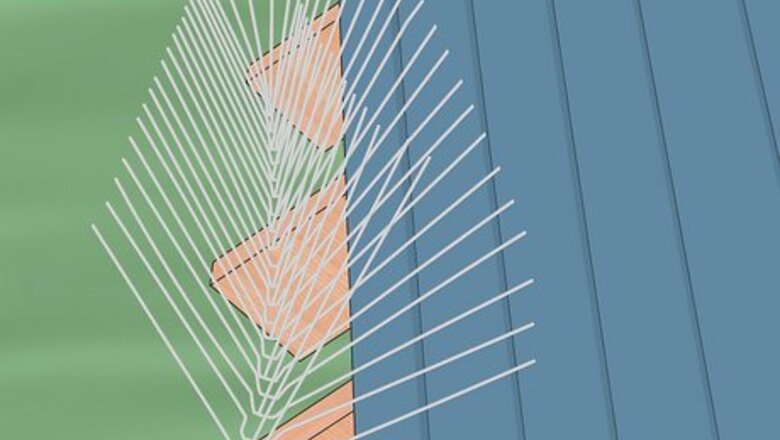
views
Setting Up Barriers
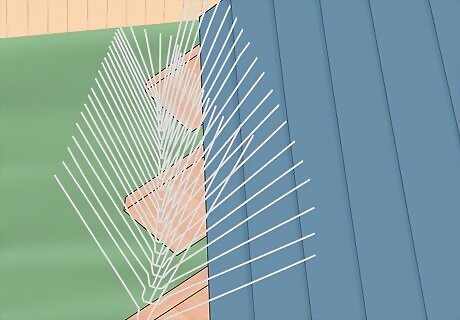
Use porcupine wire to deter birds from landing on rafters. Porcupine wire creates an uneven landing place, which makes any birds nesting there unlikely. Lay out a length of porcupine wire over any rafters where you don't want birds to nest to keep them away. Porcupine wires have heavy prongs that stick out in every direction, and they can be purchased online or at most hardware stores.
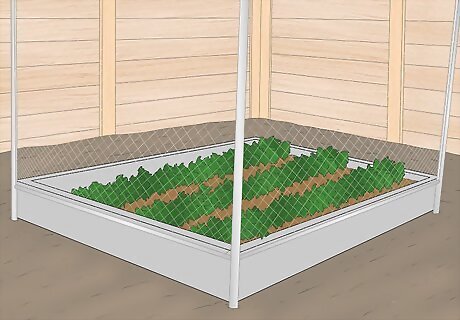
Lay out bird netting over large areas where you don't want birds to nest. If you have a garden or outdoor item that you want to keep free of bird nests, cover it with mesh bird netting. This will keep birds and other small animals from accessing the area as long as the netting stays in place. Hammer the netting into the ground with stakes to keep it securely over the area. You can also place spokes on top of buildings to keep birds from landing on the roof.
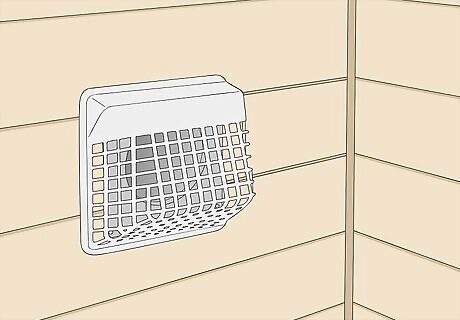
Use protective covers to keep birds from nesting in vents. Purchase a vent cover or length of wire mesh from your local hardware store and place it over any vent openings outside. This will prevent birds from making nests in your vents.
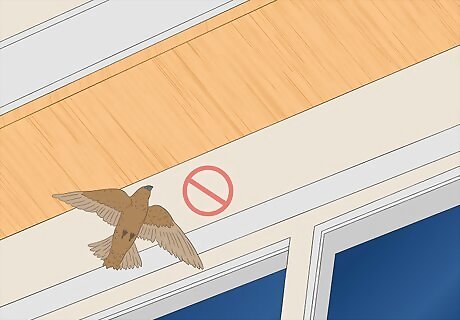
Cover any ledges with wooden boards. Place a board at an angle greater than 45 degrees over any outdoor ledges where you don't want birds to nest. Birds will be unable to land on ledges with boards and will choose somewhere else to build their nest.
Trying Scare Tactics
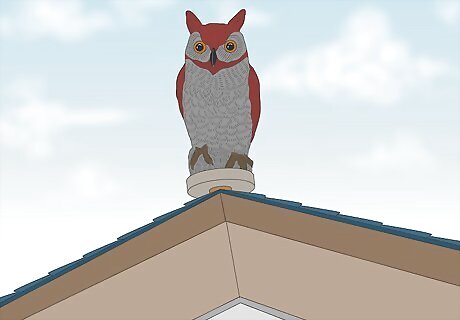
Put up plastic predators near the areas where you don't want birds to roost. Birds look out for their natural predators and avoid nesting in places that seem to be a threat. Place a few plastic owls, snakes, or foxes near any areas that you want to keep nest-free. When a bird sees the plastic animals, it will find somewhere else to nest.
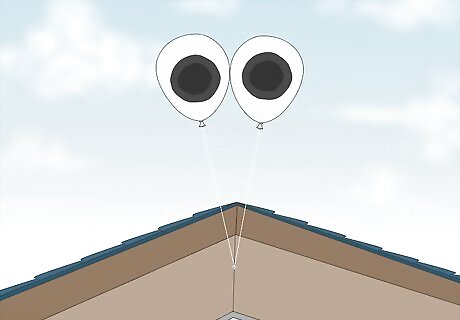
Create makeshift predator scarecrows out of balloons. Tie 2 white balloons together and paint a black circle in the center of each one. This simple scarecrow can resemble the eyes of predators and trick birds into thinking the area is unsafe.
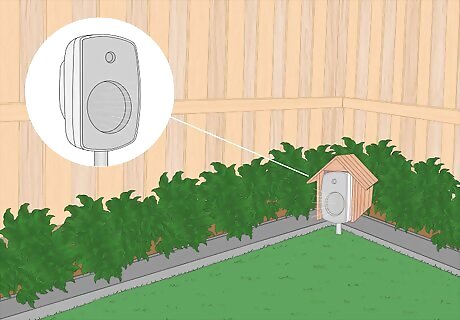
Set up noise recordings of bird predators to frighten birds. Recorded sounds of predatory animals or birds in distress can make any nearby birds think that the area is unsafe for hatchlings. Set up speakers in your backyard and play recordings during the day to deter birds from nesting. If you would prefer not to play predatory animal recordings, wind chimes can also repel birds. Let your neighbors know about your plans before setting up any noise recordings.

Hang strips of flash tape or another shiny object. Placing strips of flash tape around buildings, plants, or items where you don't want birds to nest can confuse birds and prevent them from landing nearby. If you don't have any flash tape, tying a shiny object like an old CD or piece of silverware can create a similar effect. Mirrors work as an effective alternative to flash tape. Aluminum pie plates also work as an alternative, and they can make a loud noise when they clang in the wind.
Using Bird Repellents
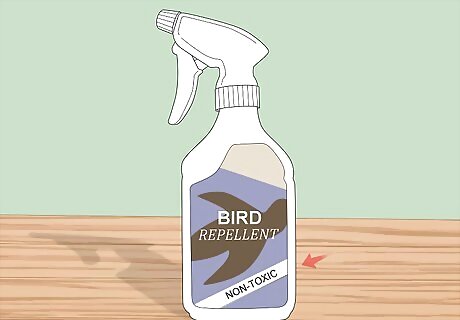
Purchase a non-toxic, FDA-approved bird repellent. In most U.S. states and many countries, killing birds with poison is illegal. Instead, buy a non-toxic bird repellent online or from an outdoor store. Bird repellents on the market can deter birds from nesting in an area but generally will not harm or kill the bird.
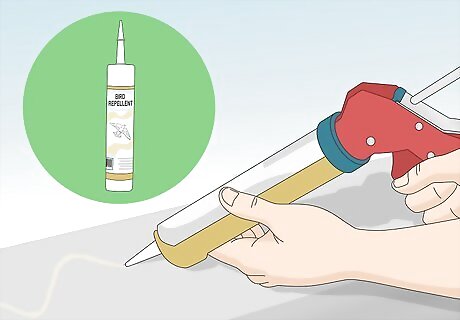
Spread tacky repellents over areas where you don't want birds to nest. Tactile bird repellents make an area physically uncomfortable for birds to land on because it is sticky. Apply a tacky bird repellent generously to any plants, ledges, gutters, roofing, or other places that you want to keep birds away from. Make sure the tactile bird spray you use is FDA-approved. Using non-FDA approved sticky substances to deter birds can injure or even kill them.
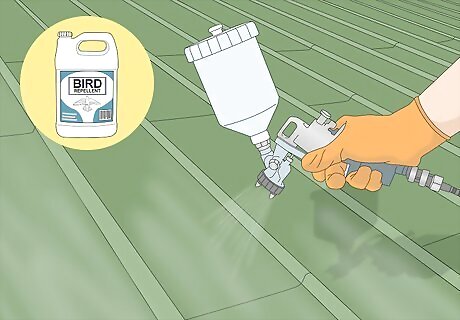
Spray glaze repellents over roofs to make them too slick for birds. Some glazes are designed to cover an area with a flat, slippery coating that makes landing uncomfortable for birds. Call a painter or construction builder to find more information on glazes that might make your roof an impossible landing place for birds.
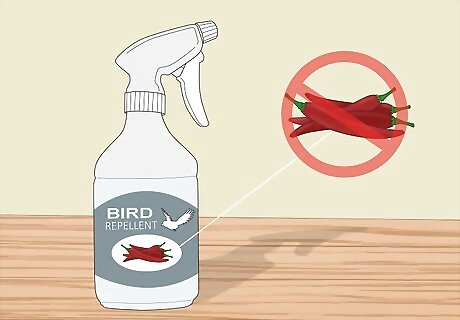
Avoid bird repellents made with spicy peppers. One popular old wives' tale says that spraying areas with spicy peppers will repel birds. But because birds lack the taste receptor for spicy foods, these repellents will not act as a deterrent. Stay away from any repellents, homemade or store-bought, that claim to keep birds away with spices. Repellants made with hot spices will, however, work on many insects.



















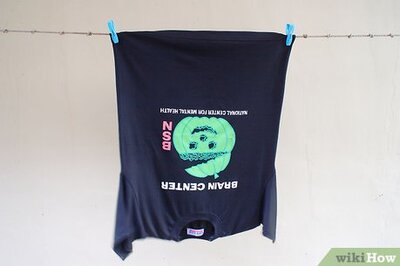
Comments
0 comment